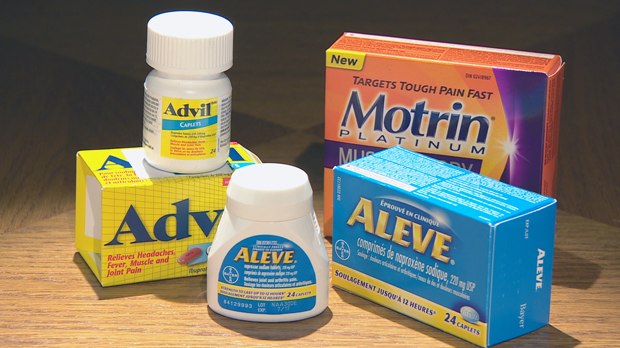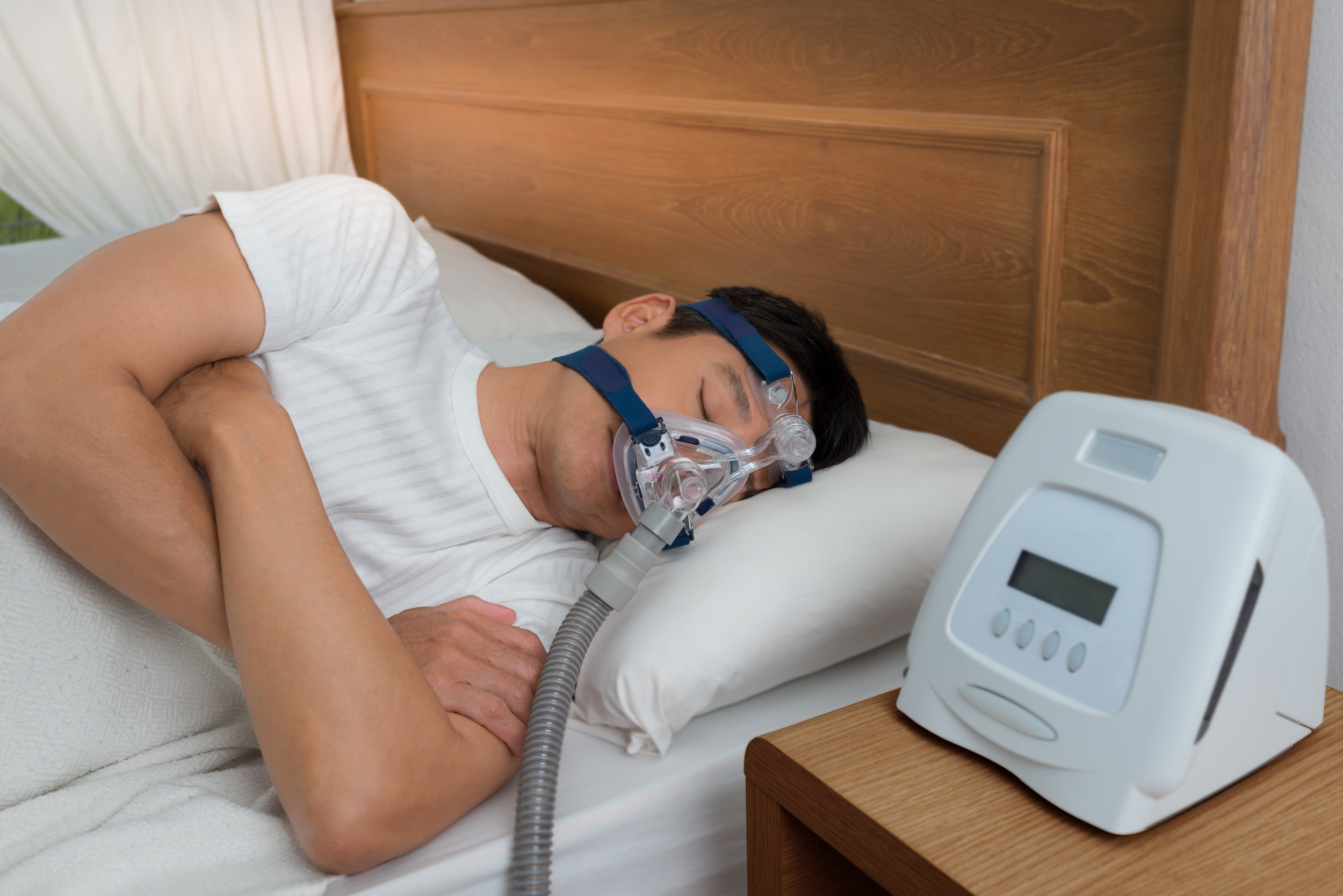Who Gets Medication Overuse Headache?
Medication Overuse Headache (MOH) occurs in susceptible persons who over treat their headaches with medication more than 2 or 3 days a week. If simple analgesics like Tylenol or Advil are used it takes 15 days a month for chronic daily headaches to occur. If opioid narcotics, butalbital, or triptans are used it takes only 10 days of medication use per month to develop daily or near daily headaches.
The preferred term is “Medication Overuse Headache,” but it used to be called “Rebound Headache.” Taking the painkiller helps the headache, a little, and then it rebounds back. The headache victim takes some more medication and the headaches continue.
Many persons with Migraine develop Medication Overuse Headache from over treatment, but persons with Tension-Type Headache can get it too.
Migraine is an episodic disorder with headache pain defined as lasting 4 to 72 hours only. Persons with Medication Overuse Headache have daily or near daily mild to moderate headaches. Many persons who have Migraine or a family history of Migraine develop Chronic Migraine which is defined as 15 headache days per month, 8 of which have Migraine features of being severe, throbbing, one-sided, and associated with nausea and vomiting, and sensitivity to light and sound.
About 90% of persons with Chronic migraine also have a diagnosis of Medication Overuse Headache. The cause of headache in the remaining 10% of persons with Chronic Migraine is uncertain. Medication Overuse Headache occurs in 3-4 % of the world population, but Chronic Migraine occurs in 1-2 %. Headache clinics have an 80-90% incidence of MOH in new patients
Certain relationships are associated with medication overuse headache which are discussed here. However, explaining why these exist is difficult and poorly understood.
Read my Mini Book on Migraine Here.
This is an article by Britt Talley Daniel MD, member of the American Academy of Neurology, migraine textbook author, podcaster, and blogger.
Persons with migraine, a family history of migraine, or Tension-Type Headache who over treat with headache medicine get Medication Overuse Headache.
There is a list of known features that are associated with Medication Overuse Headache:
Caucasian background
female sex
lower education
previous marriage
overweight
obstructive sleep apnea
frequent caffeine use
stressful life event in the previous year
head injury
high baseline headache frequency
overusing medication
comorbid depression
smoking.
Non Steroidal Anti-inflamatory Drugs (NSAIDS)
Many socioeconomic and psychosocial issues are associated with MOH yet is hard to tell if these are direct or indirect findings. These factors may just be markers of how chronic headache affects a complex situation. Articles written in the headache literature report that the features listed here are associated with medication overuse headache. These features in persons with migraine and MOH, are not diagnostic, but are statistically correlated.
The associated issues with MOH discussed here are: Caucasian background, Female sex, Lower education, Previous marriage, overweight, Obstructive Sleep Apnea, Frequent Caffeine use, Stressful life event in previous year, Head injury, High baseline headache frequency, Overusing medication, Comorbid depression, and Smoking.
1.Caucasian background is a known statistical feature which is poorly understood. One study of patients with MOH had a total sample studied of 2107 out of which 17.2% (361) were non-Caucasian and 82.8% (1736) were Caucasian. Whether education, profession, economic status, or other factors were responsible is not certain.
2.Female sex. This is easier to understand because women have 3 times more migraine than men. But why women have so much migraine is not fully understood. The American Migraine Study of 100,000 persons found 25 % of women had migraine, maxing out at age 42 years old, while 6 % of men had migraine, peaking at 28 years of age.
Whether its estrogen hormones, some genetic issue, or stress level, women have more migraine than men and therefore overtreat and get more medication overuse headache. Also, migraine and depression are 50% comorbid.
Comorbid means the 2 medical problems occur more commonly than by chance and women have more depression and psychiatric disease than men. Migraine and GAD (general anxiety disorder) and Panic disorder are comorbid 40 % of the time. Woman have an increased tendency to treat pain with medication.
A woman with pain behind one eye = migraine
3.Lower education. These persons have lower income with more irregular employment and problems providing medical insurance. It may have to do with increased stress and lower insurance coverage resulting in an increase in use of over the counter medication to treat migraine.
Research studies have found that more patients who take triptans for treatment of migraine have a reduced incidence of MOH, but a person usually has to have insurance to see the doctor and buy the triptan medication. Lower education jobs may be physically more intense and often are outside working outside in cold or hot environments which may aggravate migraine occurrence.
4. Previous marriage. This is another sociological issue. Divorce is extremely stressful for persons who go through it and the stress may last for 2-3 years. There are also child care issues, place of living changes due to house sales after property settlement, job losses, and economic changes due to payment for alimony, lawyers, and court costs.
5. Overweight. Overweight persons often don’t exercise well, and exercise is a powerful stress reducing activity that raises endorphins, internal analgesic chemicals that help pain and give a good night’s sleep. The American Heart Association recommends that everyone—all ages exercise aerobically 3-4 days a week for 20-30 minutes.
Aerobic exercise increases the heart rate. Examples are jogging, swimming, cycling, rowing, treadmill, or an elliptical machine. Obesity has an increase in psychiatric factors as well, such as depression and anxiety. Persons with anxiety and headache end up overtreating with painkillers as they nervously try to get rid of their headache.
6. Obstructive Sleep Apnea (OSA). OSA may have an increased risk of myocardial infarction (heart attack) or stroke. OSA and medication overuse headache are comorbid. Symptoms of OSA are: hypersomnia, the tendency to fall asleep during the daytime, such as while driving, reading, watching movies or TV, snoring-noise produced by compromised air travel during sleep, and sleep apnea. Apnea is observance by a bed partner that the patient stops breathing during the night. OSA occurrence is closely tied to overweight and can be treated by weight loss.
Obstructive Sleep Apnea
6. Frequent caffeine use. The American Headache Society has said that the number one drug that drives medication overuse headache is caffeine. Caffeine is a drug. It has pharmacological properties of promoting cerebral alertness and vasoconstriction of cerebral arteries. Caffeine is a weak drug for treating migraine by causing vasoconstriction to the vasodilated artery caused by the migraine process.
The general public is confused about caffeine. It is true that taken with a limitation of no more than 2 days a week as treatment of migraine headache, caffeine is helpful for some persons. When Coca Cola was introduced in the late 19th century by a pharmacist in Georgia it was advertised as a treatment for migraine.
The soft drinks that are caffeinated are Coke, Dr. Pepper, Pepsi, and Mountain Dew. The amount of caffeine in these soft drinks is 35-55 mg. Regular home brewed coffee e.g. Folgers 8 oz has 135 mg of caffeine, while Starbucks has 250 mg in 8 oz.
Caffeine is a drug. Excedrin is commonly used over the counter to treat migraine and it has 65 mg of caffeine and 325 mg of aspirin. The problem is that the migraine process releases inflammatory chemicals in the brain that last 3 days. Taking more than 2 days a week of caffeine causes continual release of the inflammatory chemicals and the development of medication overuse headache.
7. Stressful life event in the previous year. This factor relates again to anxiety, insomnia, and depression stemming from some stressful event. The stressful event could be job loss, change of living location, divorce, childbirth, loss of close family member, retirement, or major change in health. Migraine has many triggers—food, estrogen changes, insomnia, red wine, barometric weather change—but always the number one issue that drives migraine is stress.
Cannot handle Pressure
8. Head injury. The International Classification of Headache Disorders III, which is the “Bible” for headache diagnosis for the world has an entry called “Headache attributed to trauma or injury to the head and/or neck.” The main problem here is if the patient with the head injury has Migraine. Migraine occurs in 25% of women and 6 % of men.
Persons with migraine fare poorly with head injuries. Then it depends on the type of the head injury. It could be a mild, non-concussive head injury, a concussion, cerebral trauma with penetrating head injury, cerebral trauma with non-penetrating head injury, or a cerebral contusion. The diagnosis of concussion has been stressed the past few years as a worry for NFL football players, or even young kids playing middle school football.
A concussion is a head injury associated with either brief, 2-5 minutes loss of consciousness or a head injury associated with short-term amnesia for current events. Cerebral contusion denotes a more severe, harder impacting head injury with longer loss of consciousness, even developing coma, and associated with bruising or tiny dot hemorrhages in the brain on CAT scan or MRI.
Such injuries are concerning and often times life changing, but the worse part of it is that the doctor or nurse or mother overtreats the patient with opioid narcotics, butalbital, or over the counter drugs like caffeine, NSAIDS, Tylenol, Advil, or Aleve. Then, if too much medication is given the patient will develop medication overuse headache which can last for months to years.
I have personally seen many such patients who sustained a mild concussion with brief loss of consciousness, had a normal neurologic exam and imaging, who then went on to have disabling severe headaches for months after.
Often times when I review their previous medical records the patient had been given hydrocodone, or Fiorinal, or 800 mg of ibuprofen to take multiple times a day on hospital discharge and that is the real cause for the long headache period—medication overuse headache—not the original concussion.
There have been many reports in the Neurology literature through the years of United States service men who had head injuries in combat and then sustained long, disabling periods of headache lasting years or months. I always search those articles closely because I want to see if the author documented the treatment our battle heroes were given.
However, many times the treatment given is not mentioned, and so to me, the report is incomplete and really useless when trying to study the reported head injury. Many of these papers have been written by general medical doctors or orthopedists, who, unfortunately are not trained in headache.
It still is amazing to me to see patients in my office in Dallas who have been given inappropriate headache treatment by pain doctors or primary care doctors who don’t know anything about medication overuse headache. I saw a young migraineur this week who had been taking Fioricett 3-6 pills a day for ten years and has had daily, severe headaches from it.
I volunteered to join the Navy at the end of the Vietnam conflict and was a Lieutenant Commander in the neurology department of Balboa Hospital in San Diego, California from 1974 till 1976. I saw many head injured Navy personnel fresh off the boat from “West Pac” (Navy talk for Vietnam). Unfortunately, 1974 was before the world knew about medication overuse headache which was not well described in the neurology literature until about 1991.
Look at “Concussion and Migraine,” on my website, www.doctormigraine.com. Please here click to read.
That’s going to cause a headache.
9. High baseline headache frequency. The problem here is that only Migraine patients release the inflammatory neurochemicals (neurokinin A, substance P, and CGRP) in the brain that are part of the migraine timing cycle. So, 75 % of women and 94 % of men don’t release the neurochemicals and they don’t usually get daily headaches if they drink lots of coffee every day or use Advil, Tylenol, or Aleve frequently.
The majority of MOH patients have Migraine, but there is also is a poorly understood inherited genetic quality, so that it is thought that not every Migraine patient will get MOH, only certain ones. The way doctors know them is that they eventually show up in the doctor’s office with severe, disabling headaches with migraine features, and with a history of frequently taking a lot of painkillers.
The Migraine Timing Cycle
Metabolism of the inflammatory chemicals occurs so that after the chemicals are released in the brain by the ganglia of the cerebral arteries and the trigeminal nerve. The chemicals leave the brain through cerebral veins, are metabolized in the liver, and eventually end up in the toilet after 3 days.
The definition of episodic migraine as lasting 4-72 hours is not some abstract time period made up by a headache committee at a medical school. 72 hours is the real, continuously observed and charted period of time a migraine lasts.
It is poorly understood scientifically exactly what happens when a drug, like caffeine, is consumed by a migraine patient and suddenly, usually after several days, caffeine doesn’t help treat the migraine by causing vasoconstriction of a dilated cerebral artery. But what happens is with the continued presentation of caffeine, the brain releases the neurochemicals continuously and the headache which started Monday, starts lingering by Wednesday, and then after that every time the patient takes their caffeine (Excedrin, Starbucks grande vente) the brain releases another load of neurochemicals and the headache lasts till Thursday, and the caffeine comes again, and the headache lasts till Friday, and so on. This called transformation from episodic to chronic migraine headache.
I tell patients using caffeine as an example to tell a story, but it could be any painkiller such as Advil, Tylenol, Aleve, NSAID, opioid narcotic, triptan, or butalbital, that overtreating with caffeine is like putting kerosene on a wood fire that just keeps burning as long as there is wood and kerosene.
I compare MOH to diaper rash. I am the father of 5 children. The baby has diarrhea from some bug they got at school. Stool in the colon is where it is supposed to be, the bowel can handle it, but when it gets on the baby’s buttocks, then it causes inflammation and redness and pain.
The treatment is to clean up the baby and then put cortisone cream on the baby’s bottom to soothe the inflammation. This is similar to what goes on in the head of a migraine patient who over treats and gets daily headaches. The cortisone treatment here also is done by headache doctors when they give a week or two of prednisone orally (prednisone is cortisone) while they detox a patient off their painkillers.
So, high baseline headache frequency is usually medication overuse headache.
10. Overusing medication. This has been explained but I want to make a plea for TV, newspaper and magazine adds for over the counter pain killers, like Tylenol, for example. Most persons I talk to know that Tylenol can damage the liver and cause liver enzyme elevation, because the FDA has required the makers of Tylenol to announce this potential side effect, but the patient has never heard that Tylenol can cause daily headache. I don’t know for sure, but I bet that MOH is a more frequent side effect of Tylenol than liver trouble and I hope the FDA in the future will educate more people about this.
A frowny face and bad headache from all those pills.
11. Comorbid depression. Migraine and depression are 50 % comorbid, which means they come together clinically more frequently than by chance. Brain serotonin levels are decreased with depression and drugs called SSRIs, selective serotonin receptor inhibitors. are commonly used in the practice of medicine to treat depression. Migraineurs also have decreased levels of serotonin and serotonin receptors are found on trigeminal nerve and cranial vessels.
Triptans are the most successful drugs for acute therapy of migraine and they act on the trigeminovascular system to work. The Mayo Clinic states that women have twice the incidence of depression. Depression links to insomnia and poor sleeping with migraine in general and in MOH very specifically.
Been down so long it looks like up to me.
12. Smoking. Smoking is always listed as an associated factor with medication overuse headache, but the reason is not well understood. It may relate to addictive patients as nicotine is an addictive drug and persons who smoke, oftentimes drink alcohol.
Smoke, smoke, smoke that cigarette
Related Questions.
1. Addiction. Caffeine at a dose of 120 mg/day is listed by the American Psychiatry Association as being addictive. Normal, non-headache, non-migraine, and good sleeping persons can safely take up to 400 mg without any serious medical problems. The migraine lifestyle calls for migraineurs to decaffeinate. In America caffeine is the number one drug driving migraine headache occurrence, while in German the number one drug is Tylenol.
Persons with generalized anxiety have higher rates of addiction to alcohol and substance abuse. Migraine and GAD are 40% comorbid and this may be another factor linking MOH with caffeine and other addictive drugs such as opioid narcotics and butalbital.
MOH occurs in families that have a history of substance abuse and MOH.
Behavioral therapy can change the addictive mindset from “have pain—take a tablet” to other less harmful ways of treating headache.
Before the advent of triptan therapy for migraine in 1991, ergotamine was commonly used for acute therapy of migraine and caused a substantial amount of MOH in migraine patients. That era is over and triptans are the most common cause of MOH in patients who have prescribed drugs. Caffeine is still a very common cause of MOH in patients using over the counter therapy. One study for the European experience of overtreatment found the mean duration of overuse with triptans is 1.7 years, for ergotamine 2.7 years, and for simple analgesics 4.8 years.
2. Prevalence. The prevalence of MOH in the general population is 1-2%. The male-female ratio is 1:3-4 and MOH is most prevalent at thirty to forty years old and like the incidence of migraine, decreases with ageing. In Taiwan the prevalence of MOH in people over 65 was 1.0%. In children and adolescents, the prevalence of MOH has been suggested to be 0.3-0.5%. MOH usually starts earlier in life than other types of chronic headache.
3. Major public health concern. Headache disorders in general and MOH in particular are a major public health concern considering the large amount of disability and financial costs both to the affected person and to society in general. MOH causes millions of days of missed work, chronic disability, and expenses for neurologic examination—seeing the doctor, testing with general lab and specialty neuroimaging such as CT or MRI, the expense of medication—making migraine the fifth most common cause of medical disability in the world. Migraine is the tenth most frequent reason for a visit to the ER. Migraine is present in 25% of women in the world and for women is their most common medical problem—more than heart disease, hypertension, diabetes, cancer, or arthritis. What are the most painful conditions? Child birth, a kidney stone, and migraine headache.
Check out my Big Book on Migraine Here.
This site is owned and operated by Internet School LLC, a limited liability company headquartered in Dallas, Texas, USA. Internet School LLC is a participant in the Amazon Services LLC Associates Program, an affiliate advertising program designed to provide a means for sites to earn advertising fees by advertising and linking to Amazon.com. Although this site provides information about various medical conditions, the reader is directed to his own treating physician for medical treatment.
All the best.
Follow me at: www.doctormigraine.com, Pinterest, Podcasts, Amazon books, and YouTube.
Britt Talley Daniel MD









